Original air date: 21 September 2025
Broadcast on BBC2
Below is an experimental version of a timeline
Blue colour, being probably the most conspicuous colour, is reserved for web links so it is out of the question and green has to be used instead. Green is used for three different purposes in the listing: for Theme, contents column it is used to mark the contents (usually a short for the detailed description in the right column). When appropriate it can also be used in the right column as a connecting text between two different – otherwise seemingly inconsistent – stories. Lastly it can be used to indicate filming location. Locations in the timeline are given in minutes and seconds, separated by a “‘” so a sequence starting 10 minutes and 20 seconds into the programme is noted as 10’20. Numbers are not very strict since usually the limits are debatable.
| Start time | Theme, Contents | More detailed description (Filming location) |
|---|---|---|
| Until 8′ | Introduction | Scientists Iwata and Kerry on board the research vessel OceanXplorer used as a base to search for the coelacanth near the island of Sulawesi, Indonesia |
| 8′-16′ | First dive | First fish found: Carpet shark (9’55) and Jelly nose (10’20) |
| 10’20 | Jelly nose | Thought to be extinct, never been seen alive before |
| 11′ | Thresher shark | The crew seems to be in the shark’s territory |
| 11’55 | Shelter | Two small fish, not disturbed by this strange contraption, seem to use the submersible as a shelter from the shark ! |
| 12’20 | Problem | Underwater currents forced the crew to abort the dive |
| 13’15 | Background information | Scientific relevance of the coelacanths, including Attenborough’s own experience |
| 15’35 | New plans | Go where they know about underwater caves, 160 m underwater |
| 16’10-26′ | Coelacanth found | A cameraman spots something among the rocks (16’25). Turns out to be a coelacanth between them |
| 19’20 | Adaptations | Attenborough talks about various adaptations of the fish. Large eyes, specifically mobile tail fin etc |
| 21’25 | Return to the boat | Crew decide to work in shifts |
| 23′ | Iwata’s shift | The fish hasn’t moved since it was first spotted and it won’t move |
| 24′ | Kerry´s shift | Still the fish won’t move |
| 24’50 | Unmanned ROV | Still nothing happening |
| 25’30 | IR cameras | Switch to IR in case the lights were making the fish nervous. IR is undetectable by any fish |
| 26′-33’40 | Starts to move | 39 hours gone: How it moves its fins is interesting to scientists. Peculiar use of all fins, particularly tail fin |
| 26′ | Disappearing act | The fish disappears inside a cave, an overhang, crevice where more fish are found |
| 30’35 | Thresher shark | Shark reappears so coelacanths retreat further into the crevice, also away from currents |
| 31’50 | More cameras | Underwater camera attached to the rock face, provides better view beneath the ledge |
| 33’15 | Behaviour | Scientists wanted to see the coelacanth’s feeding behaviour, and the skeletal reasons for it |
| 33’40-40’50 | Skeletal reasons | Why the fish eats the way it does (33’45-34′) |
| 35’25 | Video analysis | Comparing the base of the fins, ours compared with modern day ones. How did they crawl onto land? |
| 37’30 | External input | Dr. Neil Shubin (evolutionary biologist, University of Chicago) discusses the video and its likeness with our way of moving it is slowed down to explain his words. The videos give scientists a much better way to interpret their fossils. |
| 39’40 | Computer graphics | Computer graphics used like they were before any recordings were available |
| 39’55 | Comparisons | Skeletal features compared with terrestrial (Komodo dragon), aerial animals (bird of prey) and human athletes (javelin) all using computer graphics showing the importance of these bones for evolution on land |
| 40’50-47’30 | How it lives | Varying patterns of spots, tell individuals apart. Study breeding behaviour. |
| 43’40 | Courtship | Hanging vertically in the water. Possible courtship behaviour. Also changing colours, white underneath. |
| 44’50 | Strange behaviour | One individual is leaving the group and heading towards an outsider. Not clear what they are doing. |
| 47′ | Career highlight | Discovering something new to science, mating behaviour of coelacanths |
| 47’30-49’15 | Plastic waste | Human waste littering the ocean like anywhere else |
| 49’15-end (51’58) | Epilogue | Evolutionary importance of the coelacanth |
Selected material:
Fish found in the first dive
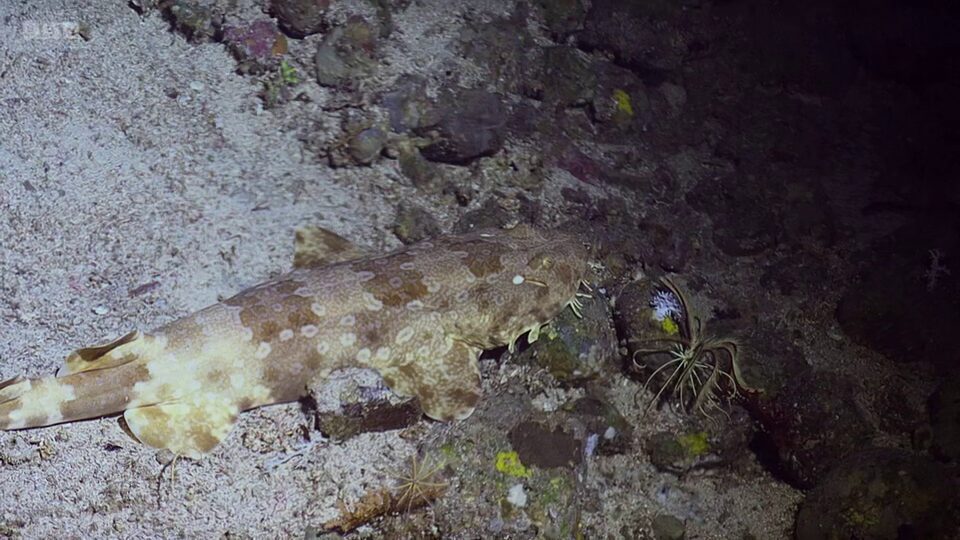
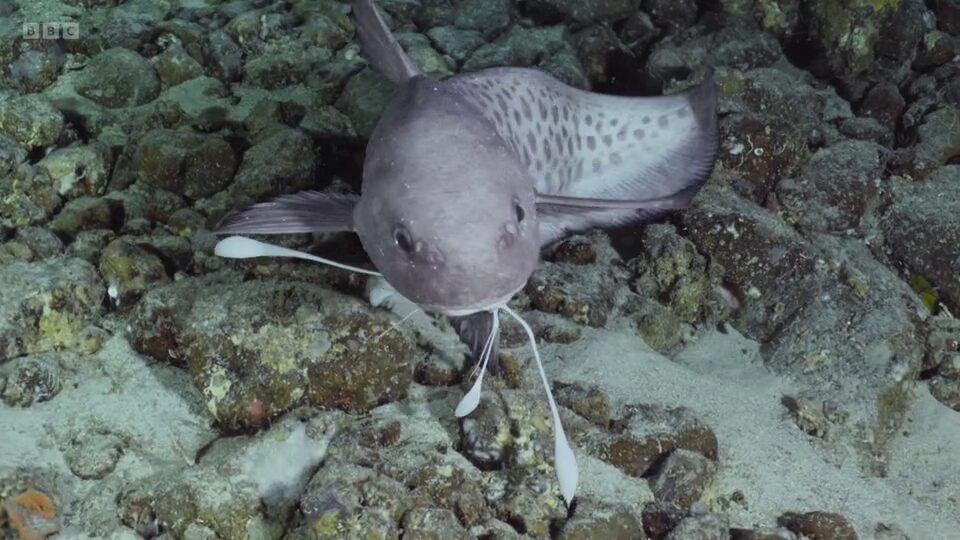
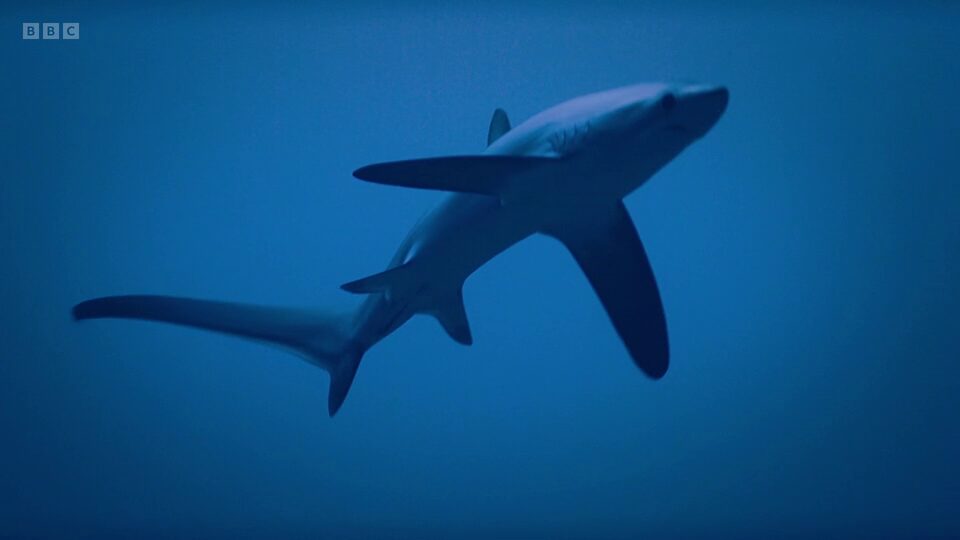
The Coelacanth itself
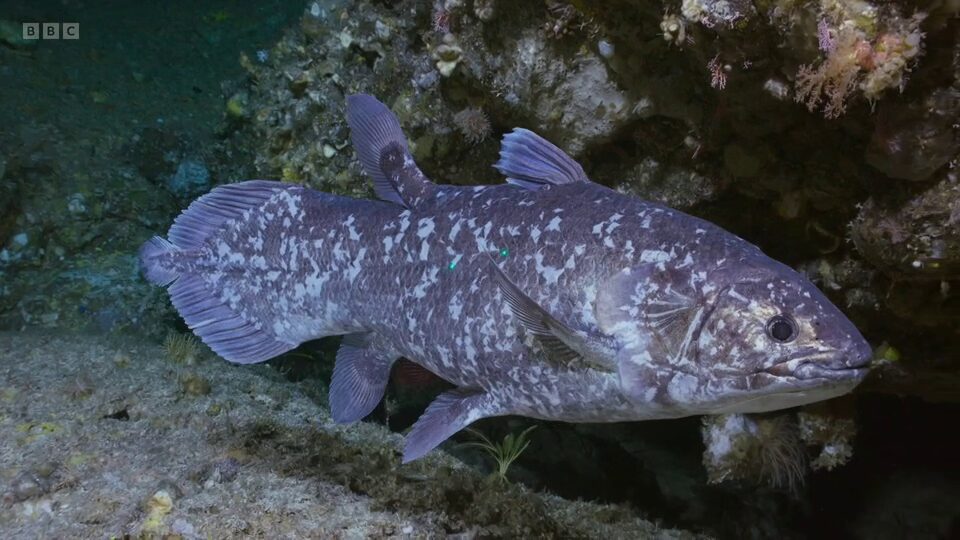
Differently structured skull
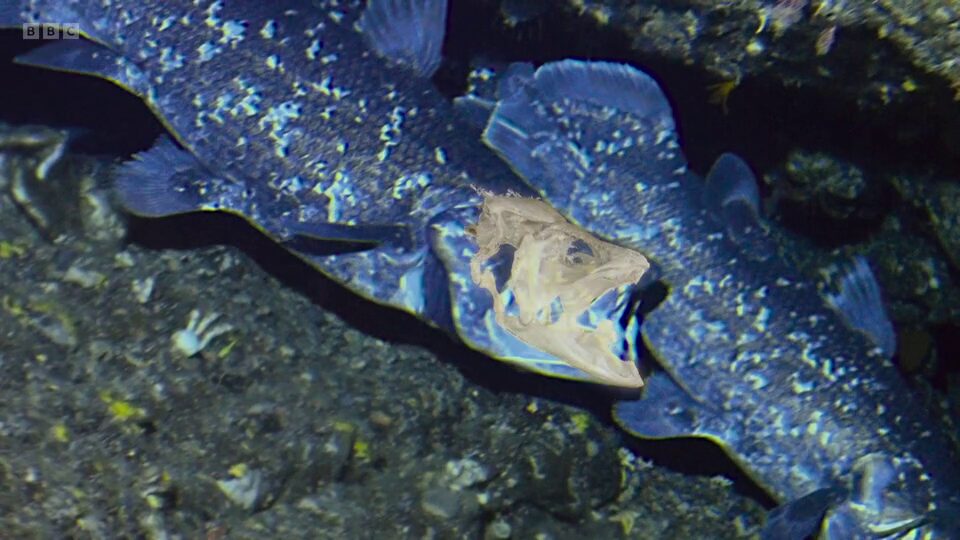
The reason the fish can open its mouth so widely …
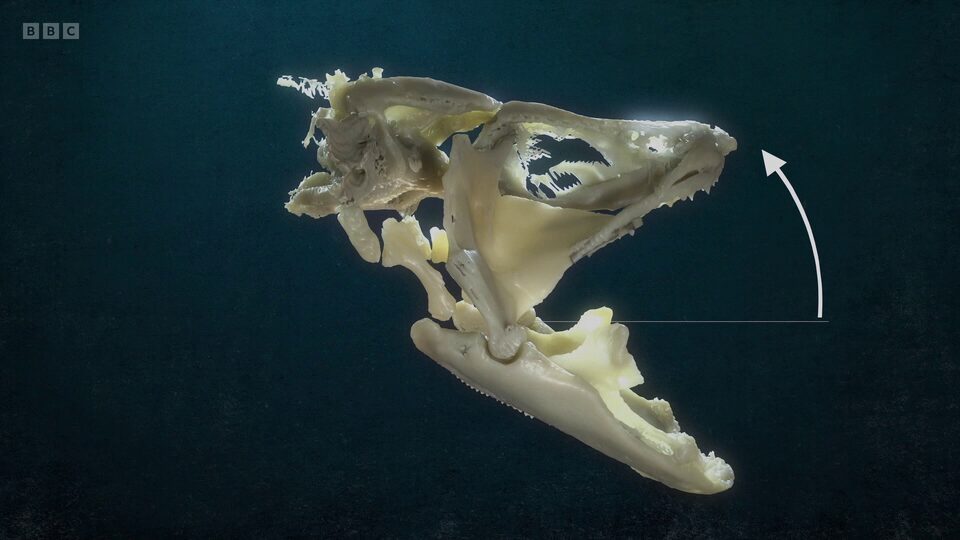
Comparing bones
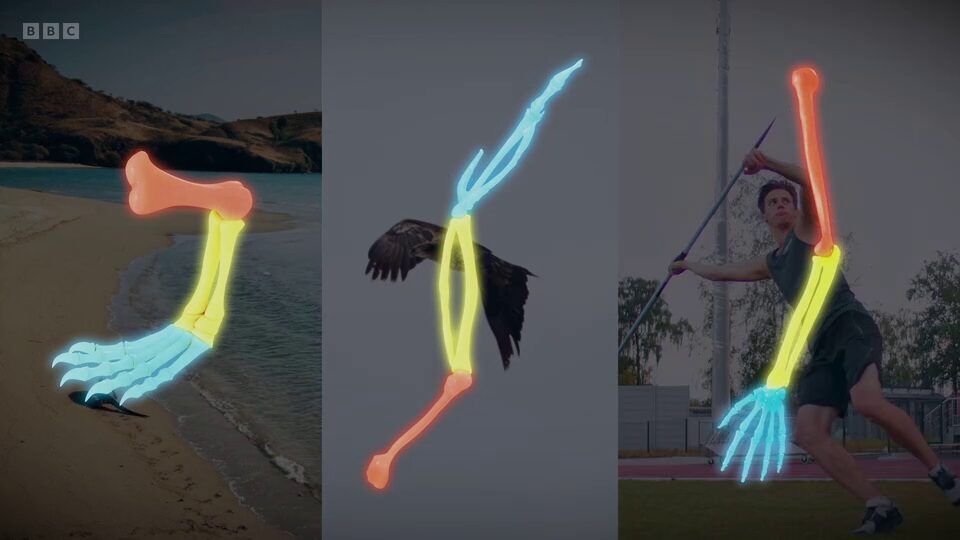
Mating behaviour
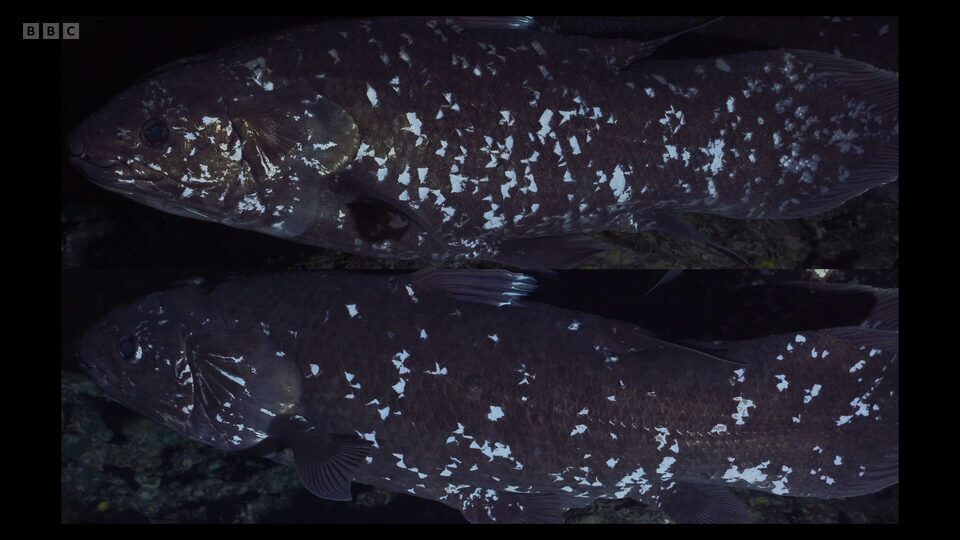
Media coverage:
In The Times an online column Ms. Carol Midgley treated this programme where she claimed the coelacanth was unknown to her. She would only have to watch the Life on Earth series –episode 6 deals with that part – to be vaguely familiar with it from being considered (by many scientists) a key to life on dry land. However not everyone can watch all those numerous hours of his work. This is a part of what this website is about, creating an overview of them.
Not all scientists agree with the coelacanth being this missing link, Richard Dawkins (to name one of them) dismisses it as a living fossil. However, scientists disagreeing could be regarded as the bread and butter of scientific progress; they will push forward for a more acceptable answer. Presently, this solution is good enough for natural history.